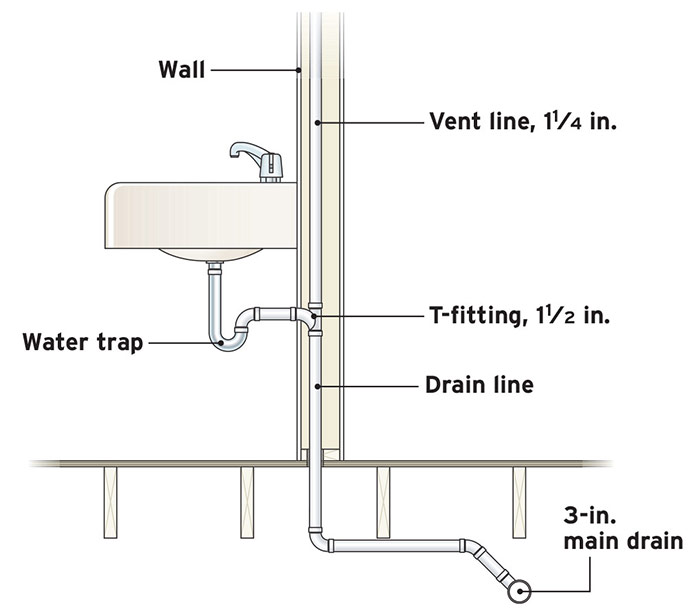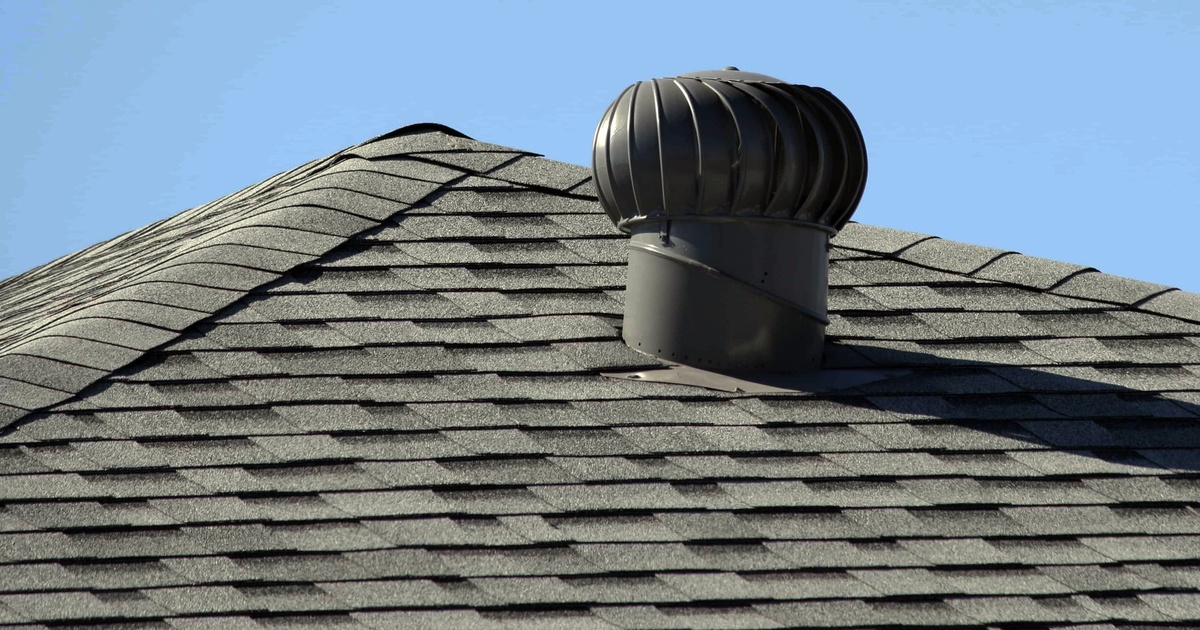Achieving Proper Ventilation in Your Plumbing System: Why
Achieving Proper Ventilation in Your Plumbing System: Why
Blog Article
This post following next relating to The Upsides of Proper Ventilation in Plumbing Design is incredibly attention-grabbing. Don't miss out on it.

Correct air flow in plumbing systems is typically forgotten, yet it is vital for maintaining the functionality and security of your home's pipes. Ventilation aids regulate atmospheric pressure, avoid the buildup of harmful gases, and make certain the efficient removal of waste. In this overview, we will check out the relevance of appropriate plumbing air flow, exactly how it works, and the advantages it gives your plumbing system.
Just How Ventilation Functions in Plumbing Equipments
Atmospheric Pressure Regulation
Correct ventilation keeps balanced atmospheric pressure within the pipes system. When water flows with pipelines, it displaces air. Without appropriate air flow, this displacement can produce adverse pressure, causing reduce drains or siphoning of water from traps, which can cause undesirable odors to seep into the home.
Avoiding Sewer Gas Buildup
One of one of the most critical functions of pipes vents is to avoid drain gases, such as methane and hydrogen sulfide, from building up within the home. These gases can posture major health threats and are extremely combustible. Vent pipelines permit these gases to escape securely outdoors.
Aiding in Waste Elimination
Air flow aids in the effective elimination of wastewater by protecting against airlocks in the drainage system. When air can flow freely through the vents, it permits water and waste to move efficiently via the pipelines, lowering the danger of clogs and backups.
Benefits of Proper Air Flow
Enhanced System Effectiveness
Properly aerated pipes systems operate extra effectively, with less blockages, faster draining, and less strain on the pipes. This effectiveness extends the life expectancy of the pipes system.
Improved Air Quality
By preventing drain gases from entering your home, proper ventilation contributes to far better indoor air top quality, making your living environment healthier and a lot more comfy.
Stopping Water Damages
Adequate air flow aids protect against water from being siphoned out of traps, which can result in drain gases getting in the home and creating water damages over time.
Steps to Make Sure Correct Air Flow
Consulting Pipes Codes
Constantly speak with regional pipes codes when designing or customizing your plumbing system. These codes supply the needed guidelines for correct venting and ensure your system fulfills security requirements.
Normal Inspection and Maintenance
Normal inspections can aid identify potential air flow concerns before they end up being major problems. Maintenance jobs, such as cleaning up vent pipes and checking for obstructions, are essential for keeping the system in good working order.
Specialist Installment
For new setups or significant alterations, it's wise to work with a professional plumbing technician. They have the expertise to guarantee the air flow system is appropriately created and set up according to code.
Understanding Air Flow in Plumbing
Air flow in plumbing refers to the network of pipelines that allow air to move via the drain system. These vents offer multiple objectives, including regulating air pressure within the pipelines, protecting against drain gases from going into the home, and assisting in the smooth flow of wastewater.
Sorts Of Pipes Vents
Main Heap Vent
The primary pile vent, additionally known as the vent pile, is the primary air vent in a plumbing system. It prolongs from the primary drain line up via the roofing system, allowing gases to get away and fresh air to get in the system.
Branch Vent
Branch vents connect to the main stack vent and offer specific components, such as sinks, commodes, and showers. These vents ensure that each fixture has sufficient ventilation to work appropriately.
Air Admission Shutoff (AAV).
An Air Admission Shutoff (AAV) is a one-way shutoff that allows air to get in the pipes system without the need for a conventional vent pipeline extending via the roof covering. AAVs are frequently made use of in remodellings or areas where setting up a common air vent is unwise.
Indicators of Poor Air Flow in Pipes.
Slow Draining Fixtures.
If your sinks, tubs, or commodes are draining gradually, it could be an indicator of bad air flow. Insufficient air circulation can create a vacuum effect, making it hard for water to drain effectively.
Gurgling Sounds.
Gurgling noises coming from drains are usually a result of air being sucked with water catches due to unfavorable stress in the pipelines. This is a clear indication of insufficient ventilation.
Undesirable Odors.
Drain odors inside your home are a red flag that your pipes system is not correctly aerated. This might imply that sewage system gases are not being appropriately vented outside, leading to possibly dangerous conditions.
Usual Ventilation Blunders.
Poor Vent Sizing.
Using undersized vent pipes can bring about poor air circulation and pressure discrepancies in the system. It's vital to make use of vents that satisfy the particular requirements of your pipes system.
Improper Vent Placement.
Placing vents as well far from the components they serve can lower their efficiency. Correct placement ensures that air can stream openly and effectively via the system.
Ignoring Code Demands.
Building codes offer details guidelines for plumbing ventilation. Overlooking these codes can result in a system that stops working to operate properly and might cause costly repair work or carcinogen.
Conclusion.
Proper air flow is a critical component of any type of plumbing system, making certain that it works effectively and securely. By understanding the significance of ventilation, acknowledging the signs of inadequate ventilation, and taking actions to maintain your system, you can stop expensive issues and secure your home's air quality.
4 Things You Should Know About Your Plumbing Vents
What Plumbing Vents Are
Also called a vent stack, a plumbing vent is a vertical pipe attached to your drain line that runs through your roof. The plumbing vent pipe, or plumbing air vent, removes gas and odors from your plumbing system and allows fresh air to enter the pipes, helping the water to flow out of the drain pipes.
What Plumbing Vents Do
Plumbing vents have two basic functions. One of which is to allow unpleasant smelling wastewater and sewer gasses to escape your plumbing system instead of entering your home. Plumbing vent pipes are typically located on roofs, away from windows, to ensure the fumes exit the home completely.
The other function of the plumbing vent is to move fresh air into your plumbing system. This helps move water through every plumbing fixture in your house, like toilets and sink drains. Think of the way in which you need to let a little air into the bottle as you pour soda in order to make the drink flow smoothly.
Different Types of Plumbing Vents
True vent: This is the most common vent option. In simplest terms, a true vent is a vertical pipe attached to your drain line that exits through the roof. They often function as the main vent that other fixtures can connect to. Re-vent pipe or auxiliary vent: Attached to the drain line near specific plumbing fixtures, re-vent pipes run up and over to connect to the main vent. Common vent: Two plumbing fixtures installed on opposite sides of a wall are typically tied into the vent stack using something known as a sanitary cross. Wet vent: This venting option operates as a drain pipe and a vent at the same time. Wet vent drainage systems drain water from one fixture while venting the air from another. Although they’ve been used for over 100 years, wet vent systems have only recently been added to the plumbing code in many areas. If you’re planning on installing one in a bathroom remodel, make sure you check your local code prior to construction. Loop vent: For free-standing fixtures like kitchen island sinks, loop vents are ideal. These vent pipes run under the floor, rise from the P-trap, and create a loop inside the cabinet sink. Air admittance valve: An AAV is a one-way mechanical valve typically installed at the site of the plumbing fixture. AAVs allow venting to occur without having to tie into a larger venting system. They’re ideal for venting fixtures where you aren’t able to easily connect to an existing vent system. Common Plumbing Vent Issues
Although vent pipes typically don’t have water flowing through them, they’re still subject to many typical plumbing issues. For example, clogs are one of the most common problems associated with sewer vent pipes. If your vent pipe gets clogged, all of your plumbing fixtures tied into the vent stack will be affected.
A sink with a slow drain that bubbles and gurgles or a strong sewage smell around your toilet are both indicators that your toilet vent pipe is clogged. Because most vent pipes exit through the roof, old leaves, twigs or even a bird’s nest could be clogging the pipe.
Clogs in your vent pipe system cause a buildup of negative pressure, meaning that water won’t be able to flow out of your home very well. It’s similar to putting your finger over the opening of a straw to trap water inside. When you remove your finger, the water is able to flow out of the straw.
If you suspect you have any blockage in your vent, make sure you have a professional come examine the situation. Left unchecked, a blocked air vent can lead to other costly repairs, like leaks and sediment buildup.
Under Pressure
Pipe vents are essential aspects of a home’s plumbing system. Owning a home means learning about all sorts of things you never put much thought into before. But by understanding as much as you can about the important systems of your home, you can keep those budgets intact and those anxiety levels low.
https://www.homeserve.com/en-us/blog/home-improvement/plumbing-vents/

We were introduced to that write-up on from a buddy on a different domain. Appreciated our post? Please share it. Help others find it. Many thanks for being here. Don't forget to stop by our website back soon.
Click Here Report this page